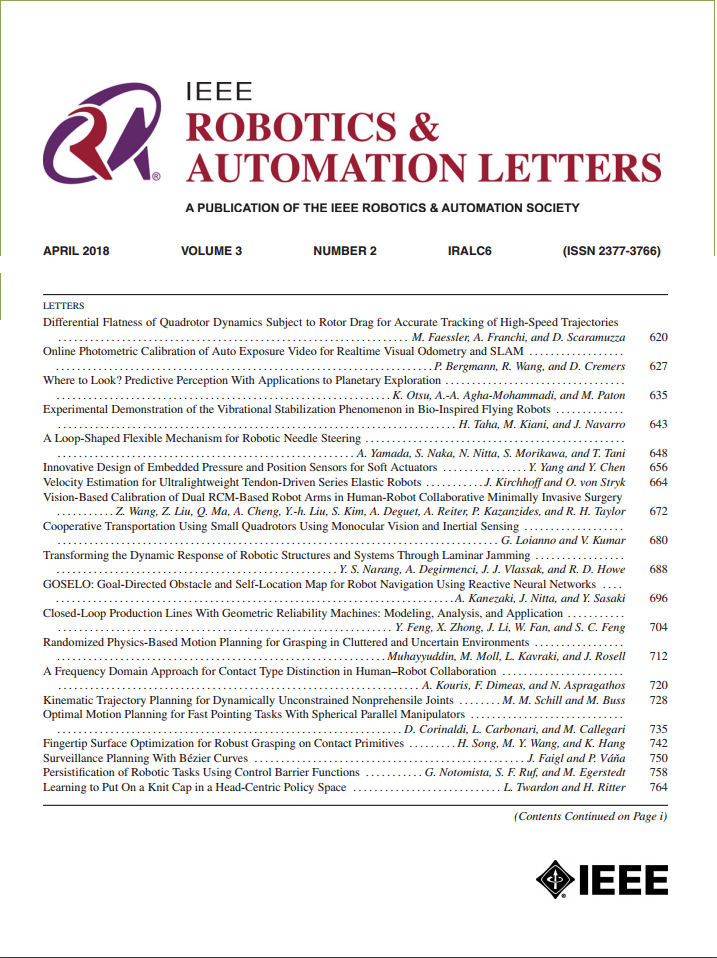FreeMask3D:零射击点云实例分割没有3D训练
IF 5.3
2区 计算机科学
Q2 ROBOTICS
引用次数: 0
摘要
点云实例分割是机器人技术中三维场景理解的关键。然而,现有的方法严重依赖于基于学习的方法,这些方法需要大量的注释3D数据,导致注释成本很高。因此,开发具有成本效益和数据效率的解决方案至关重要。为此,我们提出了FreeMask3D,这是一种新颖的方法,无需任何3D注释或额外的训练即可实现3D点云实例分割。我们的方法包括两个主要步骤:实例定位和实例识别。对于实例定位,我们利用预训练的2D实例分割模型对相应的RGB-D图像执行实例分割。然后将这些结果映射到3D空间并跨帧融合以生成最终的3D实例掩码。例如实例识别,OpenSem模块通过利用跨模态大型模型(如CLIP)的泛化功能来推断每个实例的类别,以启用开放词汇表语义识别。在四个具有挑战性的基准(scannetv2、ScanNet200、S3DIS和replica)上进行的实验和烧烧研究表明,与最先进的方法相比,FreeMask3D在没有3D监督的情况下也具有竞争力或更高的性能。定性结果突出了其基于颜色、可视性或不常见短语描述的开放词汇能力。本文章由计算机程序翻译,如有差异,请以英文原文为准。
FreeMask3D: Zero-Shot Point Cloud Instance Segmentation Without 3D Training
Point cloud instance segmentation is crucial for 3D scene understanding in robotics. However, existing methods heavily rely on learning-based approaches that require large amounts of annotated 3D data, resulting in high annotation costs. Therefore, developing cost-effective and data-efficient solutions is essential. To this end, we propose FreeMask3D, a novel approach that achieves 3D point cloud instance segmentation without requiring any 3D annotation or additional training. Our method consists of two main steps: instance localization and instance recognition. For instance localization, we leverage pre-trained 2D instance segmentation models to perform instance segmentation on corresponding RGB-D images. These results are then mapped to 3D space and fused across frames to generate the final 3D instance masks. For instance recognition, the OpenSem module infers the category of each instance by leveraging the generalization capabilities of cross-modal large models, such as CLIP, to enable open-vocabulary semantic recognition. Experiments and ablation studies on four challenging benchmarks—ScanNetv2, ScanNet200, S3DIS, and Replica—demonstrate that FreeMask3D achieves competitive or superior performance compared to state-of-the-art methods, despite without 3D supervision. Qualitative results highlight its open-vocabulary capabilities based on color, affordance, or uncommon phrase description.
求助全文
通过发布文献求助,成功后即可免费获取论文全文。
去求助
来源期刊

IEEE Robotics and Automation Letters
Computer Science-Computer Science Applications
CiteScore
9.60
自引率
15.40%
发文量
1428
期刊介绍:
The scope of this journal is to publish peer-reviewed articles that provide a timely and concise account of innovative research ideas and application results, reporting significant theoretical findings and application case studies in areas of robotics and automation.
 求助内容:
求助内容: 应助结果提醒方式:
应助结果提醒方式:


